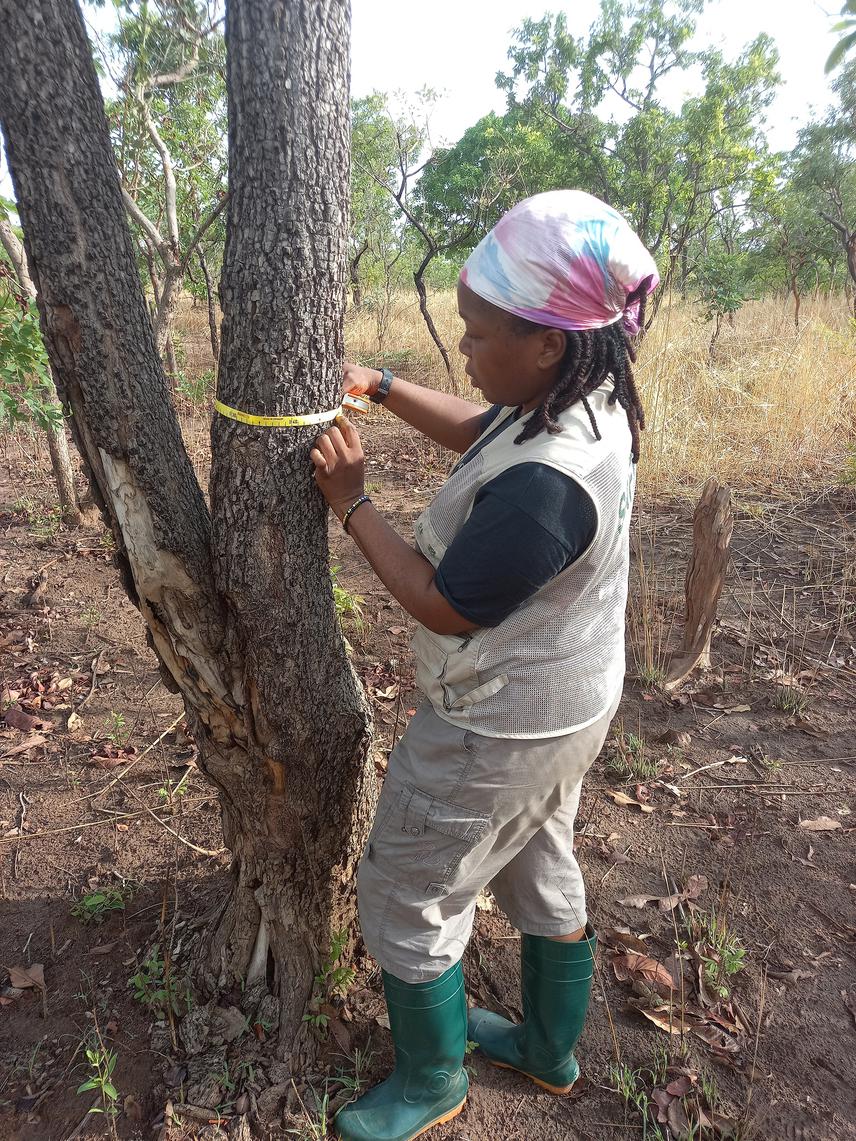Nguvan Mercy Agaigbe
Our project aims to provide novel information on the impact of fire on the globally threatened Northern Ground-hornbill (Bucorvus abyssinicus).The Northern Ground-hornbill is a keystone species whose presence/abundance is vital for the maintenance of savanna ecosystems. This is because the species occupy large home ranges and could link habitat fragments through seed dispersal. Our project seeks to arm managers with the tools they need to make science-based decisions that will benefit the threatened Northern Ground-hornbill and several other declining species in the Sudan Savanna. Our study will contribute new information to the global quest for current population status, distribution, and habitat needs of the globally threatened Northern Ground-hornbill. Our project will also provide novel information on how spatial variability created by fire frequencies and severity that could affect species distribution and habitat selection in the Sudan Savanna.

Tree measurement during negetation sampling
Fire is a key disturbance measure that drives community dynamics and ecosystem function. It is a measure that has characterized many ecosystems worldwide with positive and negative outcomes that vary depending on ecosystem type, time of application, and fire characteristics. While natural resource managers have increasingly relied on fire as a management tool to conserve and manage biodiversity in fire-prone systems, key gaps remain in our understanding of how fire frequencies and return intervals drives habitat selection and species persistence in savanna ecosystems. Our project seeks to provide new information on how fire-created variability could affect species distribution and habitat selection. This information will provide wildlife managers with the tool relevant for creating habitat features that increase native biodiversity in fire-dependent ecosystems.
The savanna biome is the most fire-prone ecosystem on earth, with fire often acting as an important driver of habitat structure and ecosystem function(Alonso-Canas and Chuvieco 2015, Chuvieco et al. 2016). Our study will provide novel information on the impact of fire on the globally threatened Northern Ground-hornbill (Bucorvus abyssinicus), currently classified as “Vulnerable” under the IUCN/BirdLife threat category. The Northern Ground-hornbill is a large (4 to 5 kilograms) iconic ground dwelling bird native to savanna and grassland ecosystems in west, central, and east Africa where its feeding behaviour can be shaped by fire regimes. This information will provide natural resource managers with an important tool relevant for creating mosaic of vegetation that maximizes native biodiversity within areas altered by spatial and temporal fire gradients. Our study will also contribute new information to the global quest for current population status, distribution, and habitat needs of the globally threatened Northern Ground-hornbill.